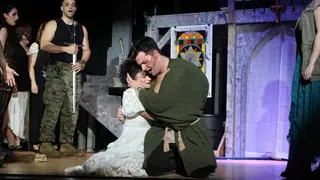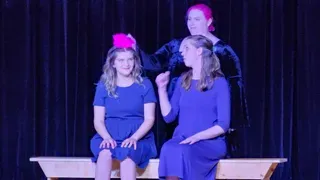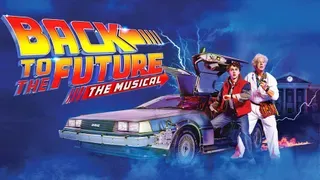July 25, 2012
Chicago Whispers - A History of LGBT Chicago before Stonewall
Lewis Whittington READ TIME: 3 MIN.
St. Sukie de la Croix's 'Chicago Whispers' is a broad-shouldered history, pre-Stonewall era, and takes its place on the shelves of, notably Charles Kaiser's Gay Metropolis and George Chauncey's Gay New York, vital urban GLBT histories.
Chicago is La Croix's adopted city and he has been chronicling gay Chicago for many publications over the years, so many of the stories in the book are expanded from his newspaper stories with beginning middle and end, and if there is one negative it's that this book is too episodic. Past that,though, his research and detailing analysis is first rate and the stories have built in lore.
Langston Hughes, the celebrated gay Harlem Renaissance poet, grew up in Chicago and returned there at various times in his life wrote, "Chicago is still a savage and dangerous city. It's kind of an American Shanghai." La Croix does a great job detailing how how influential the town was to artists and writers. Lorraine Hansberry (who la Croix officially outs) based A Raisin in the Sun on her family's experience in being barred from moving into a white neighborhood. William Motley was another gay writer who turned the rough streets of the town into noir potboilers like "Knock on any Door" and "Let no man write my epitaph." and la Croix has a penchant for capturing the film noirish aspects of the city in his prose.
Of course, there is no avoiding the town's corrupt politics as they play out for the burgeoning gay scene. The nightlife of clubs, entertainments, bars, parks and public spots that became notorious gay meeting places. The political tie-ins and closet cases that were running much of the show. The theater world and the thriving jazz and blues scene of pre-WWII Chicago made it a musical hub. Several gay composers, musicians and singers, including lesbian icons Ma Rainey and Bessie Smith, played the town, onstage and backstage.
La Croix's details the fast lane of gay male and lesbian bars, entertainment meccas with drag queen and kings, is the backdrop of a thriving subculture. He also profiles such pivotal figures as Pearl Hart, lesbian lawyer who defended civil rights of minorities and was public defender for countless gays who were charged with a laundry list of 'morals' crimes from the 30s on. During WWII sometimes 50, 000 a week could pass through Chicago and there were many gay liaisons that brought more visibility to the city's fledging gay subculture.
Chicago didn't escape the antigay, red-baiting campaigns of Senator McCarthy and how it ruined lives, makes for the book's most fascinating chapters, particularly the activism of Chicago's Mattachine Society, the second to establish after Harry Hay founded the gay rights group in Los Angeles in the early 50s. Other sections, such as la Croix's fixation on such phenoms of muscle magazines in the 60s and quasi-gay porn business, strikes as filler. Similarly, La Croix would have achieved a better balance to the book if he had delved into the socio-political side of Chicago gay life, which is at least as interesting as all of those bar crawls. But, between the gay nightlife and camp, there is important history to savor in this book.
- -
University of Wisconsin Press
$29.95, 344 pp., 17 b/w illus., e-book, $19.95
Lewis Whittington writes about the performing arts and gay politics for several publications.






